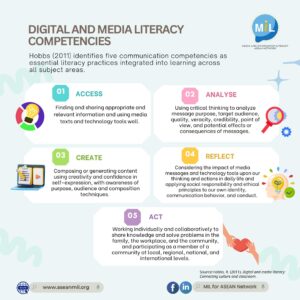Walk, Talk, Digitally Create?
This week’s content had me thinking a lot about the world we live in and the developmental milestones we seek for our kids. As a teacher and the mom of a 5 year old (who would like to be referred to as “French” for the purpose of this post), this contradicts most of my education about early childhood and the Essential Learning Experiences Saskatchewan PreK Curriculum. Kelsey asserted this week that media literacy is as fundamental as reading or math with some compelling arguments. This was echoed by Wes Fryer who emphasized the digital skills we equip our children with to be successful in the 21st Century. He talked about children’s thoughtful, appropriate and intentional exposure to technology and left us with a powerful statement:
“I absolutely believe everybody needs to understand how to use data, work with data, how data is used to tell a story, how often data is used to manipulate an audience, and it can be used in propaganda, and not only for commercial advertising purposes, but also for political purposes.”
I have never allowed French to use an iPad, but he has grown up watching Lego YouTube tutorials and kids cartoons. Reflecting on his experience with technology, it has been very passive, but we have had some good conversations about what is real and not real, and how stories in cartoons make us feel.
This week’s learning really prompted thought about where I would even begin with some intentional, active learning. Referencing Hobbs work (thanks for sharing Kathleen!), I decided to nervously dip my toes in the water of access and creation with French.

Wes highlighted ScratchJr as a possible place to start, so French and I jumped right in. We watched a few tutorial videos together, and then we co-created the following video. It was hard for me, and hard for him, but he is very proud of the finished creation which took us about 20 minutes to make. (for real). I have his assent to share this experience and the final product with you, but only under his pen name. The title is also his pen name. 🙃
French. (2024). French. Created with ScratchJr App.
Overall, the experience was ok, there was no spontaneous combustion, and I am not going to lose sleep about him becoming addicted to the iPad after using this app. As an educator, he used a lot of trial and error, problem solving and creativity to make his project. We also had to communicate a lot about what he wanted to accomplish.
Transcript assistance: At the end, he yells, “Thanks Dork”. Dork is an imaginary giant chicken that has been part of our family for a little over a year, so I was not surprised that he made the cut in French’s first digital story. We live in rural Saskatchewan, so it was also interesting to see how the setting he chose reflected his life. I really enjoyed seeing what is important to him come to life.
How old were your kids when they started creating with technology? Did this week’s content change your perspective on the learning experiences we provide for our kids/students?
What a fun activity for you to do! Personally, I feel my past experience with media literacy (thinking back to when I learned about technology or media) I felt that the “creativity” piece was often not the main focus. Since becoming an educator I have been trying to find ways to build digital creativity pieces in my teaching. When I taught grade 1, we often used “Chatter Pix” as another tool for them to tell stories. After hearing Wes share so many of his projects, I have been wanting to try to find more engaging or deeper opportunities for students to create using technology.
Miranda, I loved reading about your first venture into tech creation with “French”! It’s wonderful how you blended learning with creativity and a bit of family humour—Dork the giant chicken definitely deserves his star role. Wes Fryer’s insight about media literacy being as essential as reading and math resonates, especially when we see kids exploring and expressing what’s important to them digitally. Your example with ScratchJr is a great way to introduce purposeful, active tech use. I’d be curious to hear how French’s experience with ScratchJr shapes his curiosity about other creative tools! Thanks for sharing this adventure—your post reminds us that tech can be a bridge between storytelling, problem-solving, and bonding.
Miranda, I still struggle with this creation piece with technology. My own children are 11 & 15 and do not use technology to create in this type of form. They use it in a more traditional fashion. My 15 year old made a “How to Clean & Cook Fish” video when he was in Grade 3 or 4 using iMovie. This was maybe more me doing it with his input as it was new to both of us. I do like the idea of using technology to create stories with my students. I think that it is something that they would be able to do and would have fun doing.